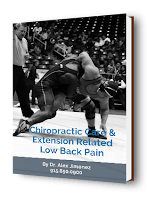For individuals who’ve been injured during an automobile accident, recovering from their injuries quickly and returning to their regular lifestyles is a top priority but, unfortunately for some people, that may not always be the case. Studies suggest that individuals diagnosed with whiplash-associated disorders may have slower return-to-work rates than people who’ve experienced other musculoskeletal injuries.
 |
| Share Free Ebook |
A study published in the journal BMC Public Health found
that only 44% of individuals suffering from whiplash had returned to work after
two years as compared to 57% of individuals with other musculoskeletal
injuries.
Approximately 19-60% of individuals with whiplash-associated
disorders still experience symptoms six months after the injury, and up to half
of that percentage will fail to return to work within a year due to their
symptoms. Researchers from Denmark conducted a study to determine whether the
high rates of continuous and consistent symptoms actually affected the
return-to-work rates of individuals with whiplash type injuries. The study
included 104 individuals with whiplash and 3,204 individuals with other
musculoskeletal disorders, such as back pain. Prior to the start of the study,
all of the study participants had been listed for sick leave for at least eight
weeks.
By the end of the study, 56% of individuals with whiplash
injuries were still on sick leave after two years. The results for this study
proved to be much higher compared to the results found in earlier studies. For
example, a study conducted in 2001 demonstrated that only 12% of individuals
with whiplash-associated disorders hadn’t returned to their normal activities
or they had resumed back only to modified job functions a year after their
initial injuries. The difference could be due to the fact the newer Danish
study included a variety of individuals whom had previously described long-term
chronic symptoms as compared to the 2001 study which evaluated a wider group of
individuals within two days after seeking medical attention for their whiplash
injuries. Regardless, both research studies showed that for individuals with
chronic symptoms of whiplash, the chance of long-term work disability was
greater.
Preventing Work Disability with Chiropractic
According to the research findings, its important to suggest
that rehabilitation treatments are important for sick-listed individuals with
whiplash-associated disorders as earliest as possible. Active rehabilitation,
such as chiropractic treatment, physical therapy, and exercise can promote an
individual’s recovery as well as ensure they can return quickly to their
regular lifestyles and work responsibilities.
By Dr. Alex Jimenez




